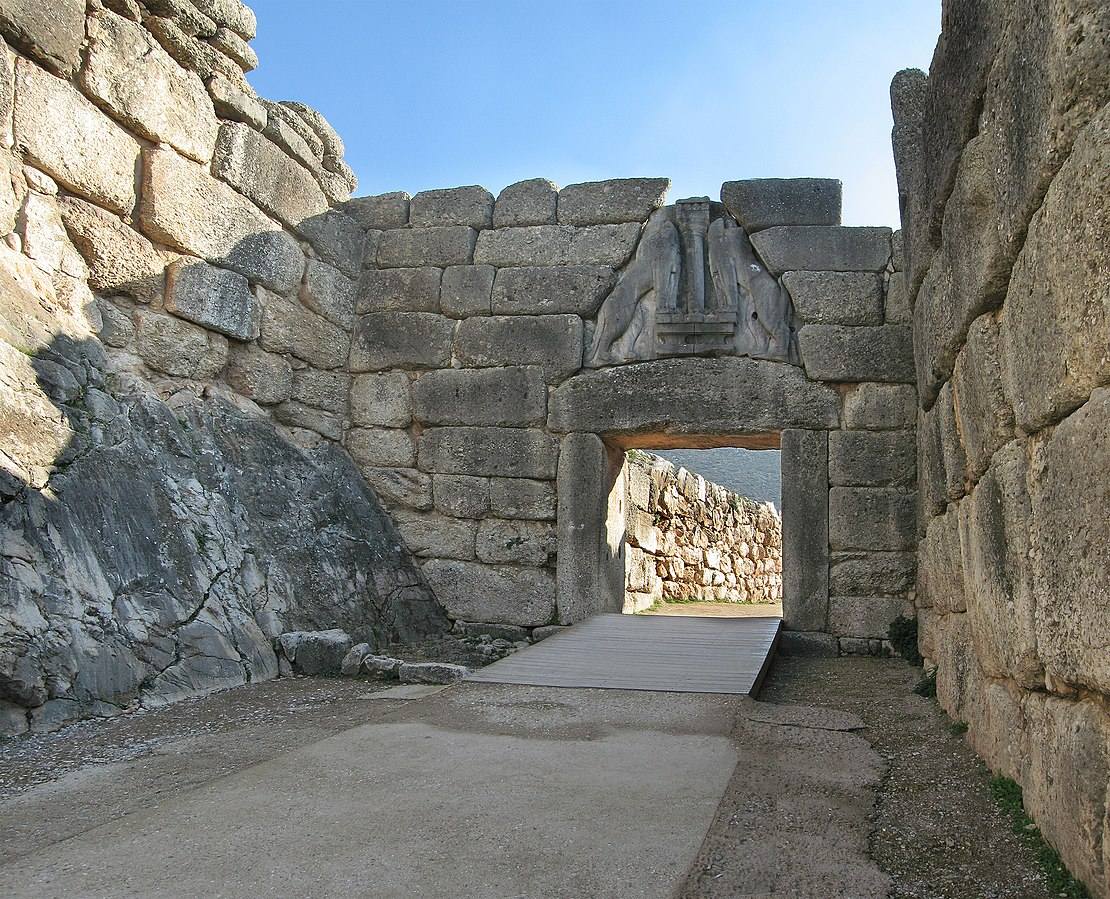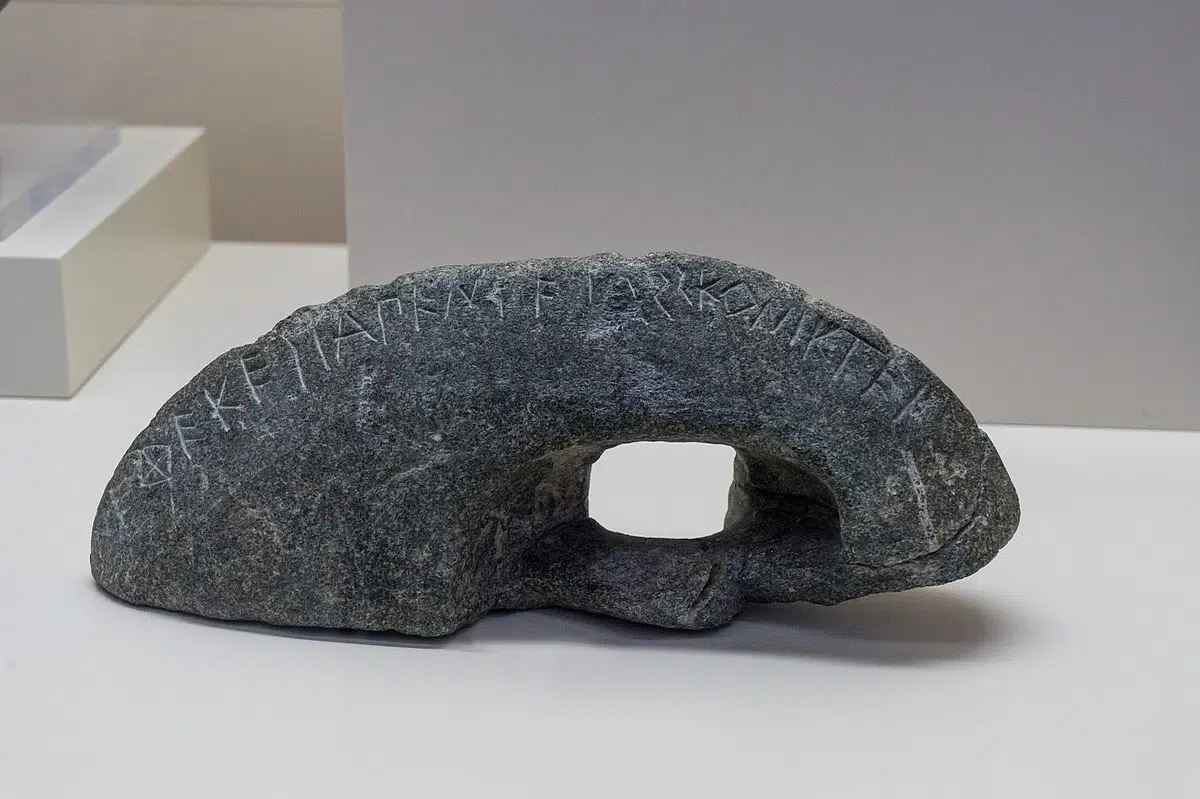
Ancient Greece was a civilization full of activity. Right from as early as 1600 BC Greece was full of impressive buildings, signs of powerful kings, and a literate priestly class. However, this era of Greek history is separated from later history by a period of major importance: the Dark Ages. But what were the ancient Greek Dark Ages? What were their effects, what caused them, and how did they end?
The Start of the Ancient Greek Dark Ages
The ancient Greek Dark Ages was a period of relative inactivity and obscurity in Greek history. During the Mycenaean Era in the Bronze Age, Greece was filled with powerful kingdoms. However, the Mycenaean Era came to an end at about the same time as the end of the Bronze Age. This was not a peaceful end. The end of this period is called the Bronze Age Collapse.

From 1250 to 1200 BC, various sites across Greece were destroyed. This is considered the end of the Palatial Period (when palaces were dominant in Greece). The period from 1200 to 1100 BC was a turbulent period, but by the end, the Mycenaean civilization had essentially collapsed completely.
From that time on, there were no major kingdoms in Greece. Instead of massive settlements with impressive buildings and palaces, most settlements in ancient Greece were small and basic. In addition, Greek literacy came to an end. The Greeks had used a writing system called Linear B, but this disappeared with the Bronze Age Collapse.
Life During the Ancient Greek Dark Ages
The ancient Greek Dark Ages continued for several centuries. It would definitely be incorrect to say that nothing happened during this era. It was still an era of detectable human activity. People still lived and left traces of their lives. They still built settlements and buildings, and they made pottery. However, all of this activity was on a much smaller scale than it had been during the Mycenaean Era.
Although there must have been leaders, and possibly even kings, there is no evidence that they had power over any large areas of Greece. However, we do know that some of the major Greek kingdoms in later history had their origin in the Greek Dark Ages. For example, Sparta was founded as a small settlement in c. 950 BC. Sparta, of course, would later go on to become one of the most important Greek city-states, and according to legend it played a major role in the Trojan War.
People still produced art during the Greek Dark Ages, although it was not as impressive as it had been before. The first part of the Greek Dark Ages (from c. 1030 to 900 BC) is associated with an art style called Protogeometric art. The second part, from 900 to 800 BC, is associated with an art style called Geometric art. These styles used much simpler patterns than had been used during the Mycenaean Era, reflective of the decline in society.

The End of the Ancient Greek Dark Ages
The Greek Dark Ages ended when Greece entered the Archaic Era. However, this was not a sudden event. In fact, Greece started to emerge from the Dark Ages as early as the ninth century BC. It was at this time that the Greeks started writing again.
This time, instead of using Linear B, they used a modified version of the Phoenician alphabet. The earliest known inscriptions of the Greek use of this alphabet, from the ninth century BC, appear to be on Thera. The adoption of this writing system was an event of major importance, which the Greeks memorialized in the legend of the Phoenician prince Cadmus in the era before the Trojan War.
However, it was in c. 800 BC that Greece truly left the Dark Ages and entered the Archaic Era. The sanctuary used by the Oracle of Delphi was founded around this time. Archaeology demonstrates that the Greeks started to trade much more with outside nations around this time. By c. 750 BC, a possible Greek colony was established at the site of Rome, possibly the origin of the legendary city of King Evander.
In 776 BC, the Olympic Games were founded. Greek poleis, or city-states, appeared at the start of this period too. This political structure was a major foundation for Greece throughout the Archaic Era.
What Caused the Ancient Greek Dark Ages?
Scholars continue to debate the cause of the Greek Dark Ages. However, they generally agree that it was a combination of factors, rather than just one.
We must remember that the Greek Dark Ages did not occur in isolation. As mentioned before, they started with a much wider event, called the Bronze Age Collapse. Lots of nations and civilizations were affected by this, not just Greece. The Hittite Empire collapsed. Egypt entered a difficult period known as the Third Intermediate Period at about this time. And other nations experienced similar troubles.
We know from Egyptian records that the Sea Peoples (a collection of various nations, seemingly from all over the eastern Mediterranean) invaded Egypt and nearby regions in the 13th and 12th centuries BC. It is possible that these invasions contributed to the Bronze Age Collapse. However, many scholars today prefer to view these as a symptom of the collapse, rather than a cause, although such a conclusion is questionable.
Other potential causes include drought, famine, epidemics, and natural disasters (such as earthquakes). Due to the lack of contemporary written sources for this period, the true cause of the Greek Dark Ages is unlikely to be resolved any time soon.
See all the latest news from Greece and the world at Greekreporter.com. Contact our newsroom to report an update or send your story, photos and videos. Follow GR on Google News and subscribe here to our daily email!



